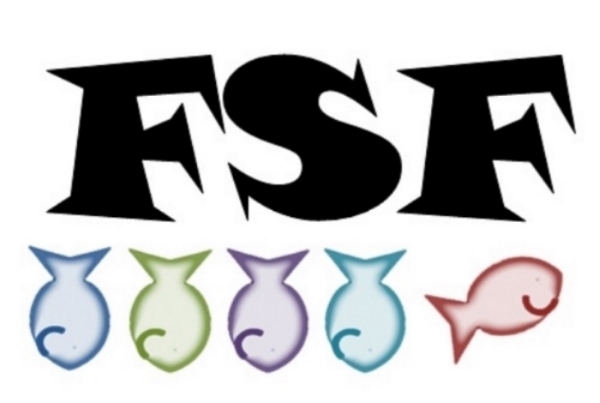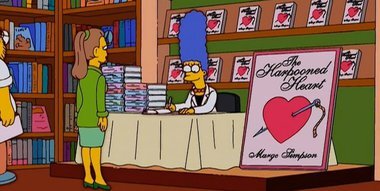I don’t have to introduce “The Simpsons” right? Okay. Good.
While Homer is being fired once again, Marge takes the kids to a corporate run bookstore where the books are only on the fourth floor according to Lisa (seems legit). Deciding not to watch Bart mock the PHD level employees, Marge goes to a book reading by one of her favorite romance authors.
She asks the author about writing, which I have to say is an interesting scene. First the woman brags about her degree in writing from Yale, but follows it up with encouragement that anyone could be a writer. Huh. She’s a nice collegiate. Marge asks, “If I write a novel, will they tell me when it comes out?”
“They should,” replies the baffled author.
And thus Marge makes Homer watch the kids while she starts a novel about a whaling town, the first chapter of which is entitled “Starts and Beginnings.” She writes a sentence then has a brownie break.
WAIT! Writing is supposed to come with brownie breaks! WHY HAS NO ONE TOLD ME THIS!!!!!!
At first, Marge writes about a 19th century family whose patriarch is a handsome, thoughtful whaler who looks like a fit Homer. Then Homer comes home and acts like . . . well, Homer. This inspires Marge to change the husband of the novel into a “brute” who is terrible at his job and makes out with the mermaid on the front of his ship. And the hero of the story is instead modeled after the kind and muscular neighbor Ned Flanders.
Image property of Fox . . or Disney I can’t keep up!
Marge finishes writing and “dares to push print” without even editing it first. This aggravates me. What a waste of a paper (unless edits are happening on the paper first then being typed into the word document). Of course, she doesn’t edit it, nor does the publishers because it’s pointed out that the main character’s name changes to Marge for a part of the story. She presents the suggestive romance novel to her 8 year old daughter for judgement (I know what I just typed, but it’s the Simpsons - okay!). Lisa is torn because she both jealous that her mother wrote a novel before she did and worries that it’s a little too critical of Homer. Still, she giver Marge words of encouragement and the book is published. Just. Like. That. Reality be damned!
Homer promises to read all 286 pages before the book is printed, but he never makes it beyond the first paragraph. Then, when everyone else reads it and realizes that the characters are based on Homer, Marge, and Ned, Homer is humiliated and hurt. Marge is mostly annoyed that he didn’t actually read the book (and busy with her terrible reviews).
SPOILER ALERT!
It’s assumed that Homer will kill Flanders for being the imaginary hunk in Marge’s novel, but instead he begs Ned to give him advise on being a better husband. Homer and Marge then decide to try writing a novel about the JFK assassination together which at least they were doing research. Research that Marge probably didn’t do for her first novel other than looking up that Nantucket is an island.
Maybe it’s a good idea not to make your book obviously about people in your life. Just sayin’.








